10 Animals Found in Malaysia
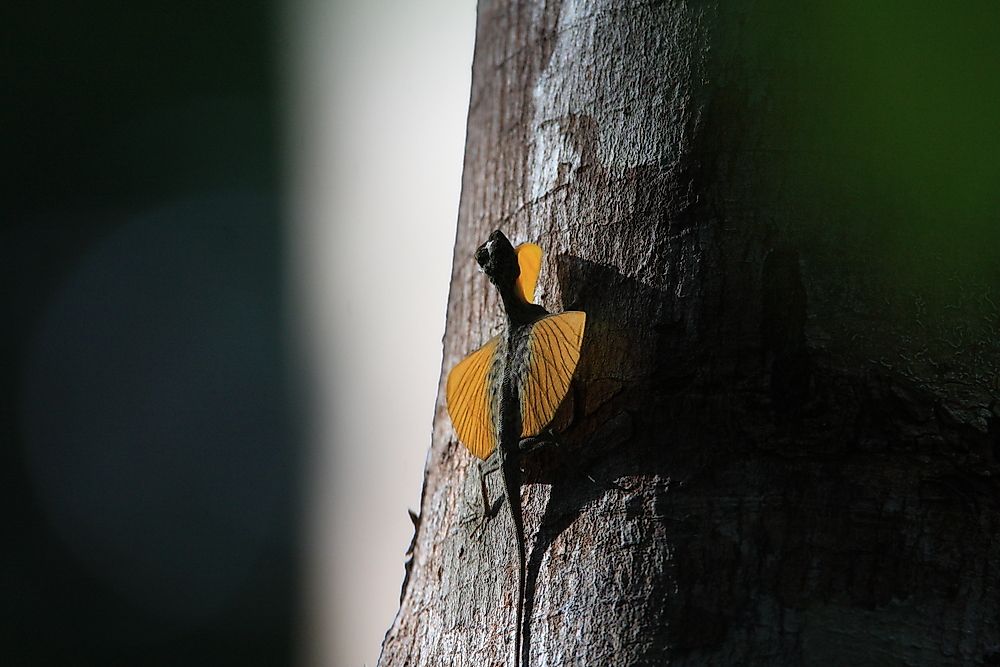
Malaysia is a constitutional monarchy in Southeast Asia. It is the forty-fourth most populous nation on earth and is made up of three federal territories and thirteen states. It is one of the seventeen megadiverse nations in the world with numerous endemic species. A considerable part of Malaysia is covered by rainforest. The country has over one hundred and fifty frogs, two hundred and fifty reptiles, six hundred and ninety-four bird and over three hundred and sixty-one mammal species. Some of the animals found in Malaysia include:
Saltwater Crocodile
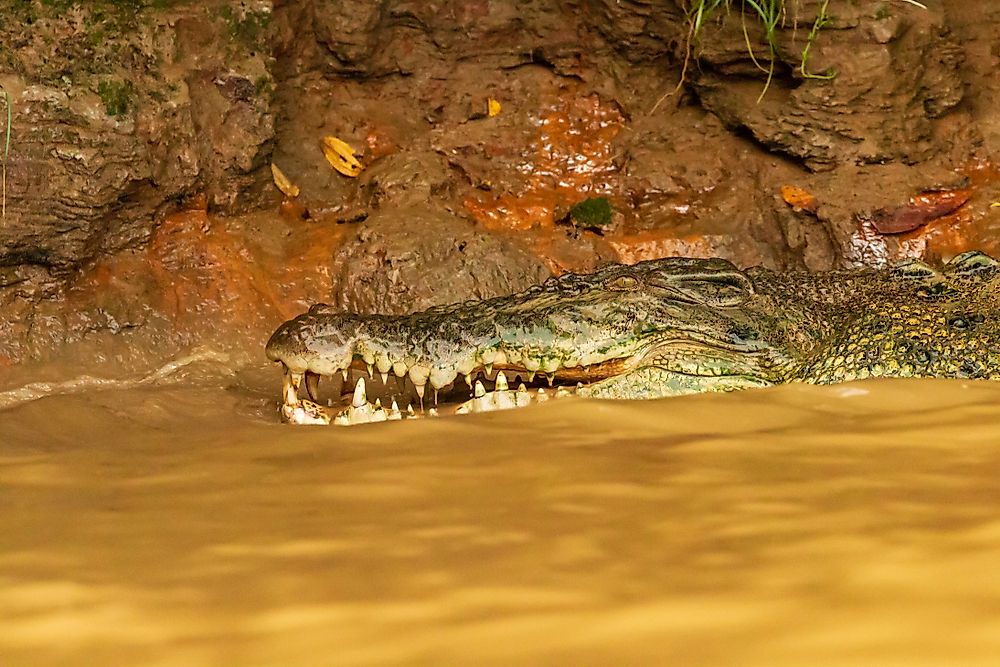
The saltwater crocodile is the world’s biggest riparian predator as well as the biggest living reptile. The saltwater crocodile, also referred to as sea crocodile, marine crocodile or estuary crocodile, resides in the marine environment, lagoons, deltas, and brackish mangrove swamps. The saltwater crocodile is indigenous to eastern India, northern Australia and most parts of South Asia. The adult male crocodile can attain a maximum weight of about 2,600 pounds and a length of about 19.7 feet while the female is less 9.8 feet long. The saltwater crocodile is an opportunistic hypercarnivorous predator that can overpower any animal that enters into its territory.
Malayan Tiger
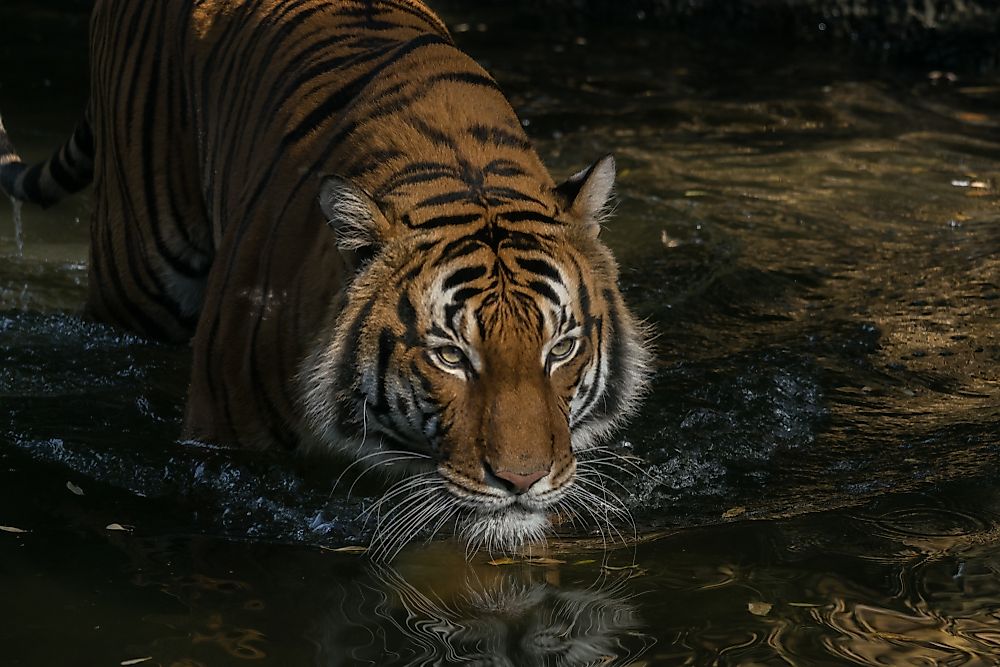
The Malayan tiger resides in the central and southern side of the Peninsular Malaysia. The Malayan tiger was classified as a critically endangered species in 2015. There were about 340 adult Malayan tigers in the wild by 2013. It is smaller in size than Bengal tiger with the female Mayan tiger being over 7 ft 10 inches long while the adult male has a body length of approximately 8ft 6inches. Their body weight ranges from 52 pounds to 195 pounds, and their average height is between 23 inches and 41 inches.
Clouded Leopard
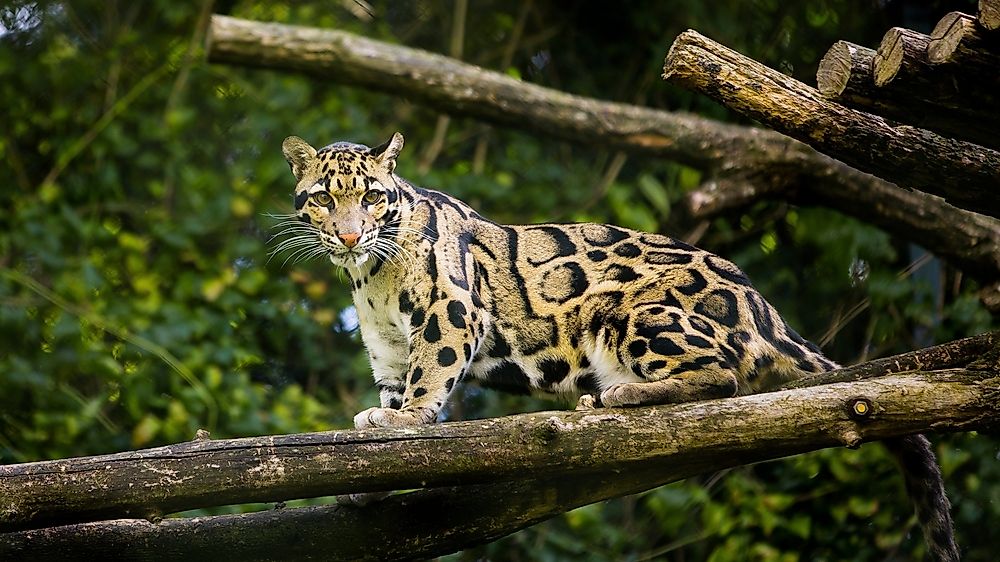
The clouded leopard, also referred to as mainland clouded leopard, is a wildcat whose habitat stretches from China through Southeast Asia to the Himalayan foothills. The clouded leopard weighs about 51 pounds. The male adults have a head-to-body length of approximately 43 inches and a 36 inch long tail while the female is 37 inches long and with a 32 inch long tail. It has a dark grey fur that is obliterated by dusky-grey and black blotched pattern. The clouded leopard has some black spots on its head.
Sunbear
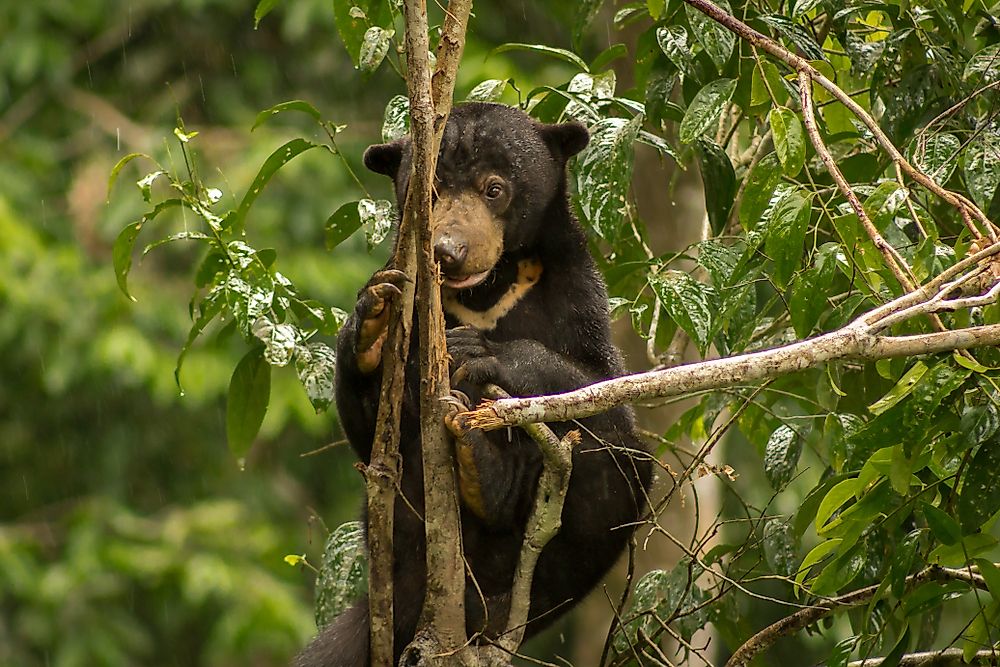
The sunbear resides in the tropical forests of Southeast Asia ranging from Yunnan Province (China), Vietnam, Laos, Cambodia, Myanmar, Bangladesh, Malaysia to northeastern parts of India. It is the smallest bear on earth with the adults weighing about 176 pounds. It has sleek, short and jet-black fur. Some of the sun bears are gray or reddish. The sun bear has a body length of about 59 inches. The male sun bears are about 20% bigger than their female counterparts. They have fur-less soles and large paws which are adapted to climbing trees. They have pointed curved and large sickle-shaped claws.
Mouse Deer
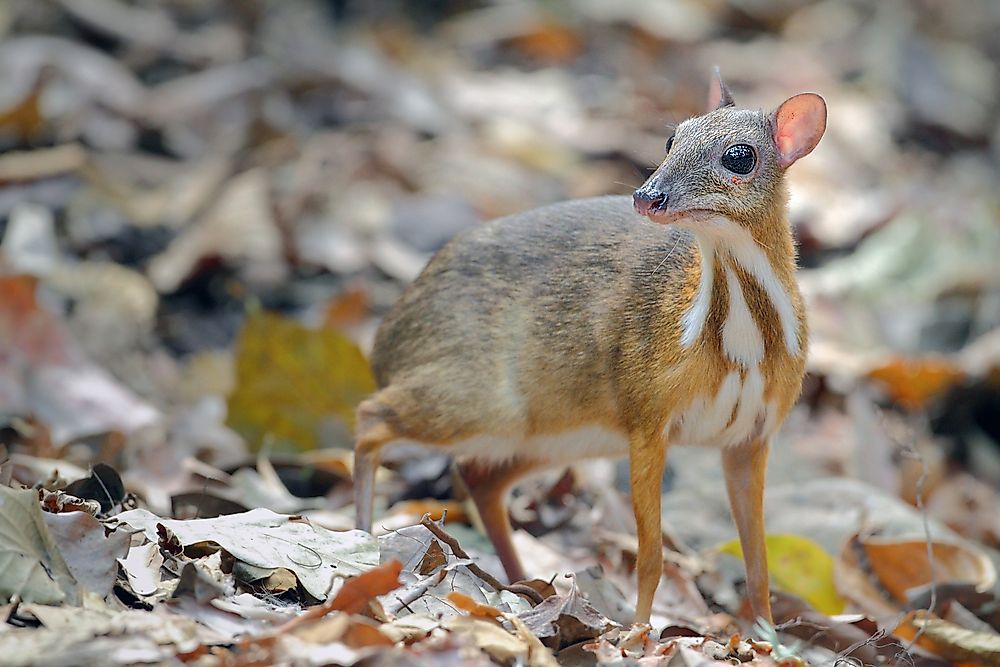
The Mouse Deer, also called Chevrotains, are smaller ungulates which belong to the Tragulidae family. Chevrotains are solitary creatures that feed on plant material. They are the world’s smallest hoofed mammals. The numerous mouse-deer species reside in the forests in Southeast and South Asia with one of the species living in the rainforests of West and Central Africa. The African Chevrotains weigh about 35 pounds while the Asian species weighs approximately 17.6 pounds.
Asian Elephant
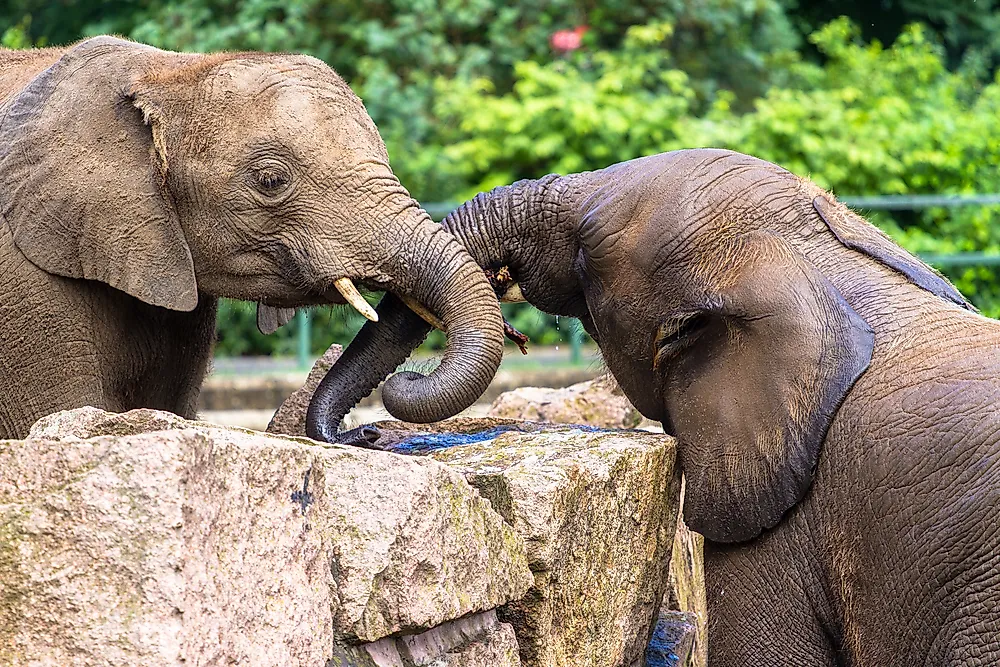
The Asian elephant is the only extant member of the Elephas genus to be found in Southeast Asia and the Indian subcontinent. It is the biggest land mammal in Asia. The African bush elephant is bigger than the Asian elephant. The male Asian elephants have a shoulder height of about 9 ft and weigh about 4 tons while the females weigh about 2.7 tons and are about 7.9 ft tall. Their body length including the head and trunk is about 21 ft with a 4.9 ft long tail. They have a grey skin which is usually masked by soil due to wallowing and dusting.
King Cobra
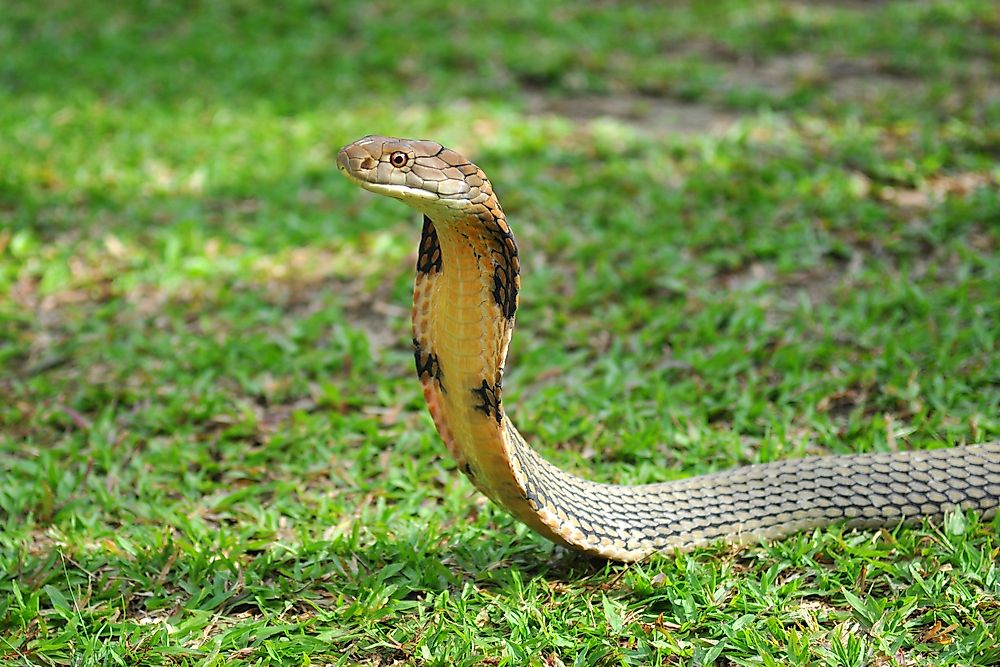
The king cobra is a venomous snake that belongs to the Elapidae family. The king cobra is indigenous to forests in Southeast Asia. It is the longest venomous snake species in the world with a maximum length of about 13.1 ft. The skin of a king cobra is brown or dark olive with numerous yellow or white crossbands and black bands. It’s a dangerous reptile that feeds on other snakes and vertebrates such as rodents and lizards. The young king cobras have shiny black skin with various narrow yellow stripes.
Atlas Moth
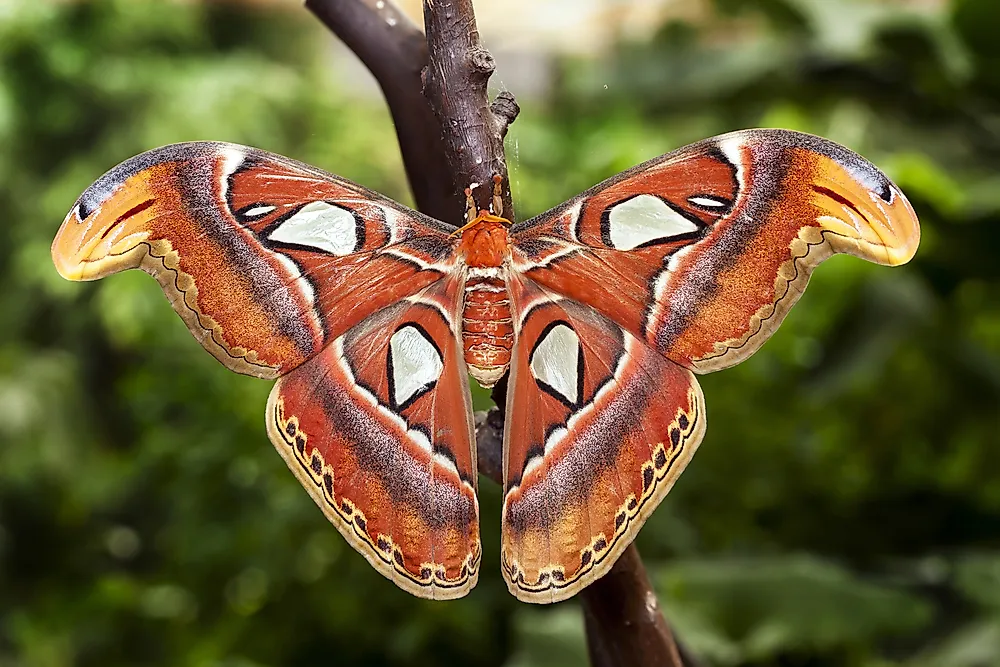
Atlas moths are indigenous to the shrublands, secondary forests and dry rainforests across Southeast Asia, East Asia, and South Asia. It is ranked among the biggest lepidopterans with a wing surface area of about 62 square inches and an 11.8inches wingspan. It’s surpassed in surface area only by the Coscinocera Hercules. The white witch is the only moth with a bigger wingspan than the Atlas moth. The female atlas moth is heavier and bigger than the male. The top part of their wings is reddish brown with purple, pink, white, and black lines plus triangular windows which are bordered by black lines.
Flying Lizard
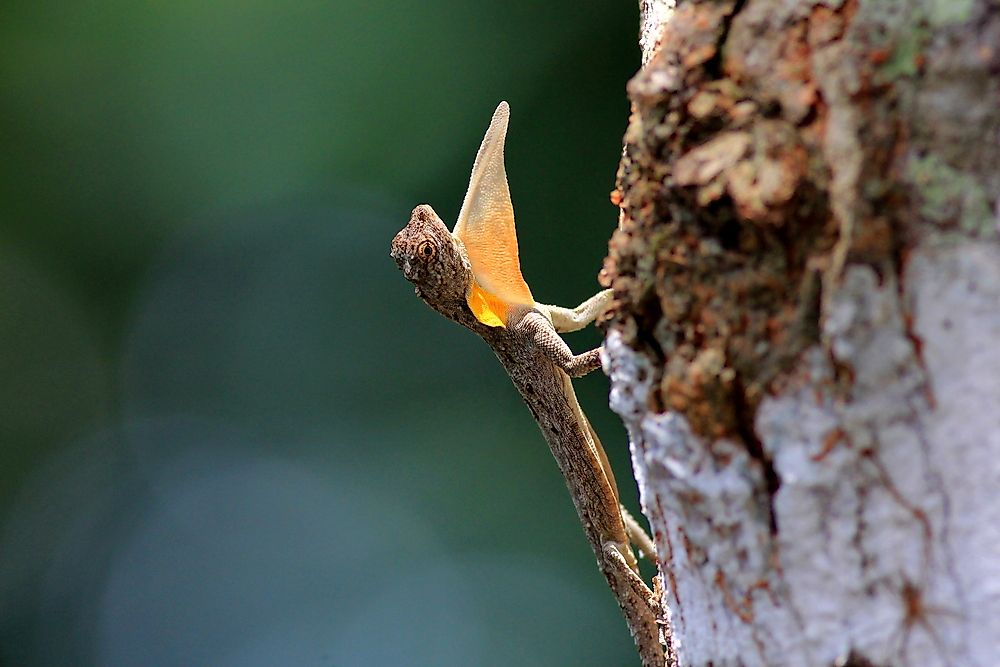
Flying lizards, also known as gliding lizards, are arboreal insectivores whose ribs and connecting membranes can extend to form wings. They have wing-like and flattened hind limbs which act as horizontal stabilizers when they are gliding. The flying lizards can glide for over 200 ft. They are native to South Asia, and they are common in the shrub jungle, teak plantations, areca gardens, and forests.
Slow Loris
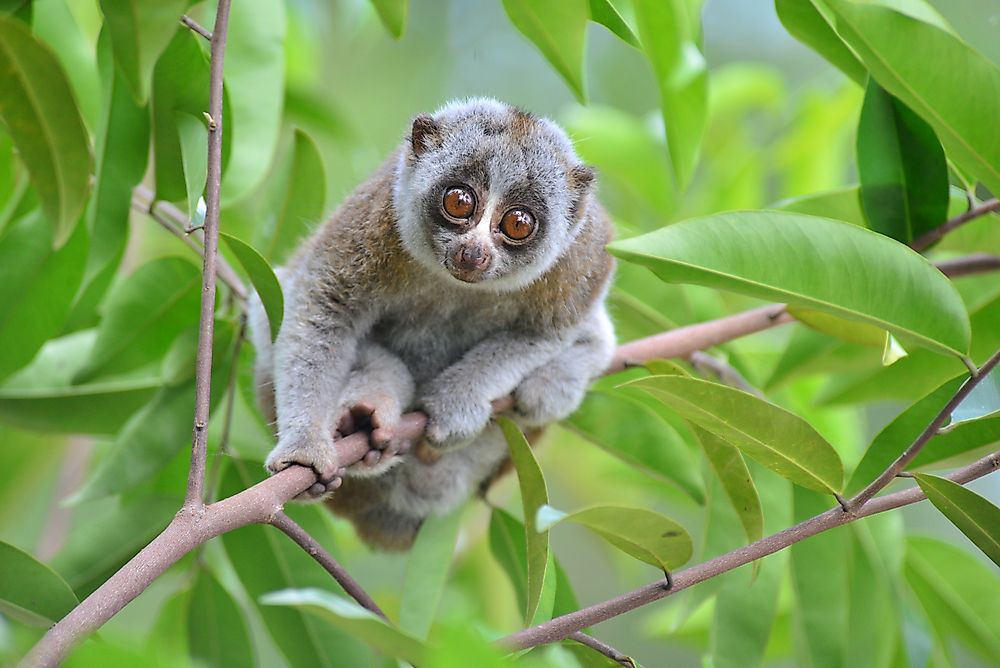
Slow lorises are primates indigenous to Southeast Asia and the neighboring regions. They have large eyes, narrow snouts, rounded head and varying distinctive color patterns. Their body weight ranges from 9.3 pounds (Bornean slow lorises) to 74 pounds (Bengal slow lorises). Their head-to-body length varies from 7.1 inches to 15 inches. Their legs and arms are equal in length. The slow loris has a long and flexible trunk which allows them to twist their body and stretch to other branches. The slow loris has a toxic bite. These creatures get their toxins from licking the glands on their hands. The secretion becomes toxic when mixed with saliva. Slow lorises are known to move very slowly.











